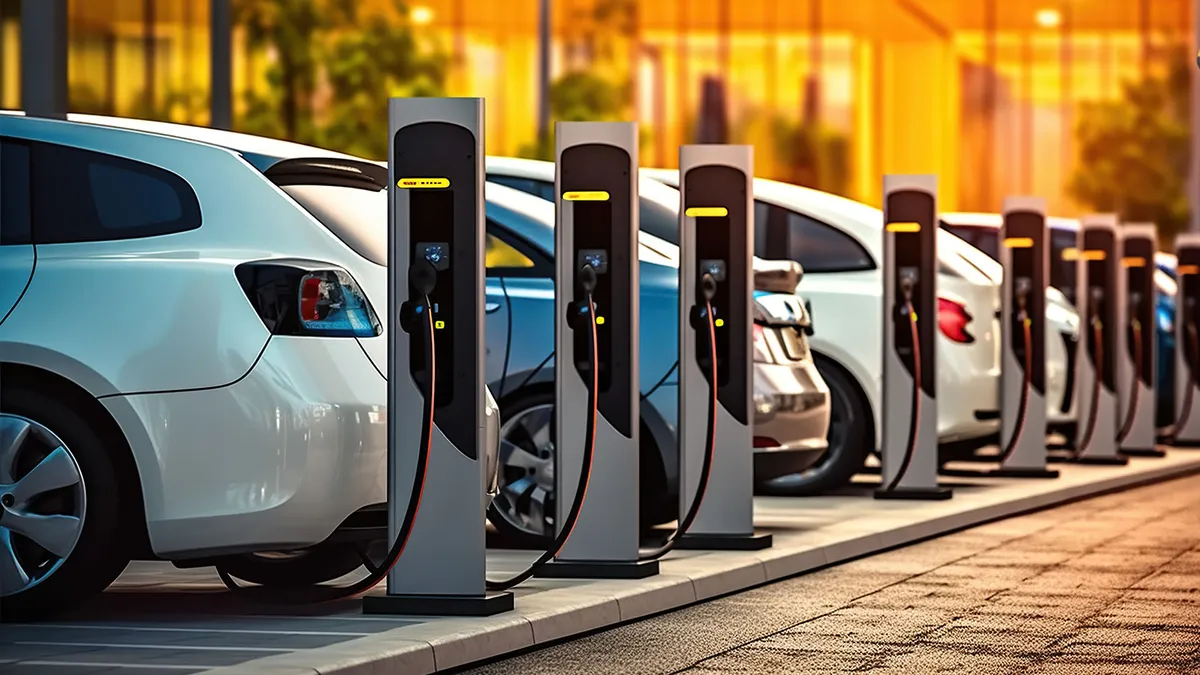Dive Brief:
- The U.S. Department of Energy’s Argonne National Laboratory and Idaho National Laboratory are conducting a demonstration project for battery manufacturer CMBlu Energy’s long-duration energy storage system, the company announced Monday.
- The initiative, which focuses on CMBlu’s Organic SolidFlow battery technology, was one of six demonstration projects focused on long-duration energy storage selected by the DOE's Office of Clean Energy Demonstrations in September. Among other things, the labs hope to look at how the technology can be used in microgrids.
- Many flow batteries — like vanadium or iron flow batteries — are metal-based, but CMBlu’s technology uses organic, carbon-based electrolyte materials, Ben Kaun, the company’s president, said. The product is also a water-based electrolyte battery — meaning it eliminates the fire and explosion risk associated with lithium-ion technology — and uses materials that are abundantly available, he added.
Dive Insight:
CMBlu is especially focused on utility-scale applications for its batteries, in the tens or hundreds of megawatts, with storage durations of five to 10 hours, Kaun said. However, the battery can technically provide longer durations of storage.
“Right now, we’re focused for initial commercialization on the five to 10 hour duration range but [for] 2030 and beyond, 10 hours or more might make sense economically based on how the grid is changing,” he said.
In August, the company announced it was working with public power utility Salt River Project on a 5 MW, 10-hour pilot project near Phoenix. The company’s technology was selected following a request for long-duration storage project proposals, and the pilot is aimed to store the large amounts of solar energy that Arizona produces during the day, and dispatch it back to the grid at night.
The collaboration with the national labs, meanwhile, includes two separate components. In the Midwest, researchers at Argonne National Laboratory will be using the company’s battery at its ‘Smart Energy Plaza’ — a repurposed gas station that is being used to research the integration and management of electric vehicle charging, among other things. And in Idaho, the Idaho National Laboratory will conduct performance tests on the technology.
“It’s valuable to us because of the strong research capabilities of the national labs — and so it’ll help us to characterize aspects of the technology that have been difficult to characterize due to the really excellent facilities and personnel that the national labs have available,” Kaun said.
CMBlu’s storage technology will be used to balance the EV chargers at the plaza, Kaun explained. Fast-charging technologies can create a local grid impact, or be limited by utility interconnection capacity, but the addition of energy storage can help minimize that impact, he said.
“In addition, if there is a loss of service, having a storage device on site… could also enable EV chargers to stay online during grid outages,” he said.
“Demonstration projects, especially those at national labs, efficiently mature our understanding of new technologies in key use cases,” Sue Babinec, battery scientist and program lead for stationary storage at Argonne, said in a statement.
CMBlu — a Germany-headquartered company — is now focused on building its U.S. team to conduct these demonstrations and pilots, as well as making sure the batteries meet U.S. safety and connection standards, Kaun said. It’s also looking to develop U.S. domestic manufacturing and a supply chain for the technology to prepare for mass production.
While these steps seem straightforward, “energy storage always has surprises for everybody — that’s why energy storage has traditionally taken a while to go from lab to market,” Kaun said. “So our next major challenge is integration and manufacturing scale-up with high-quality standards.”
Correction: We’ve updated this story to correct the month that CMBlu announced it was working with Salt River Project on a 5 MW/10 MWh pilot project.















